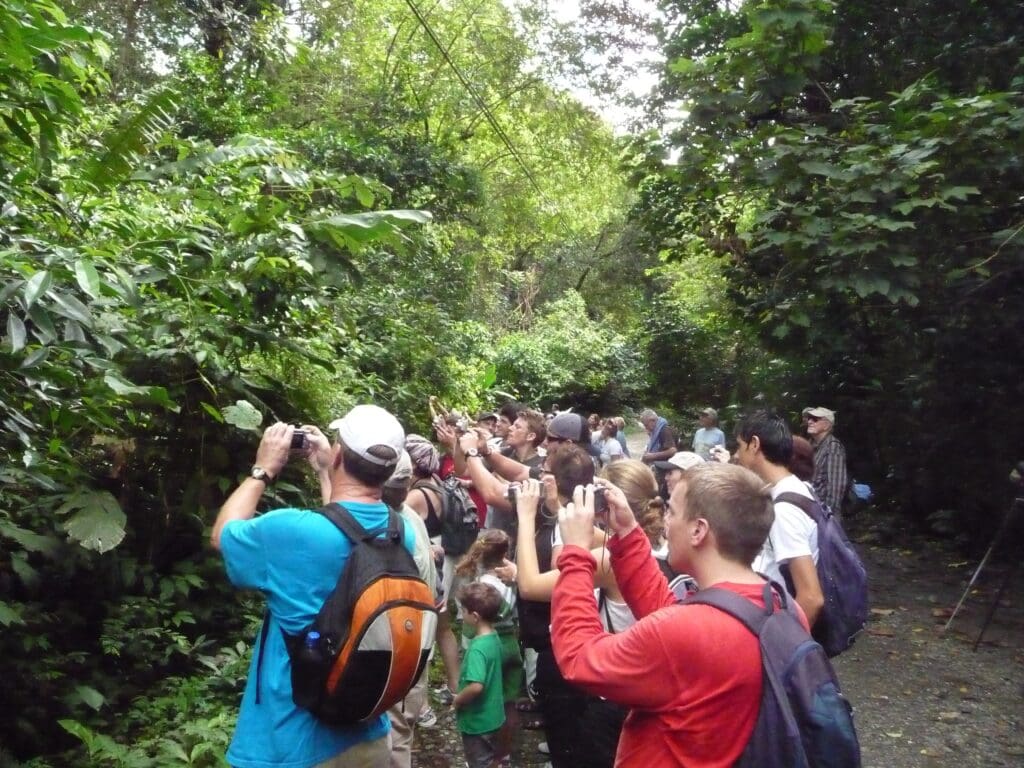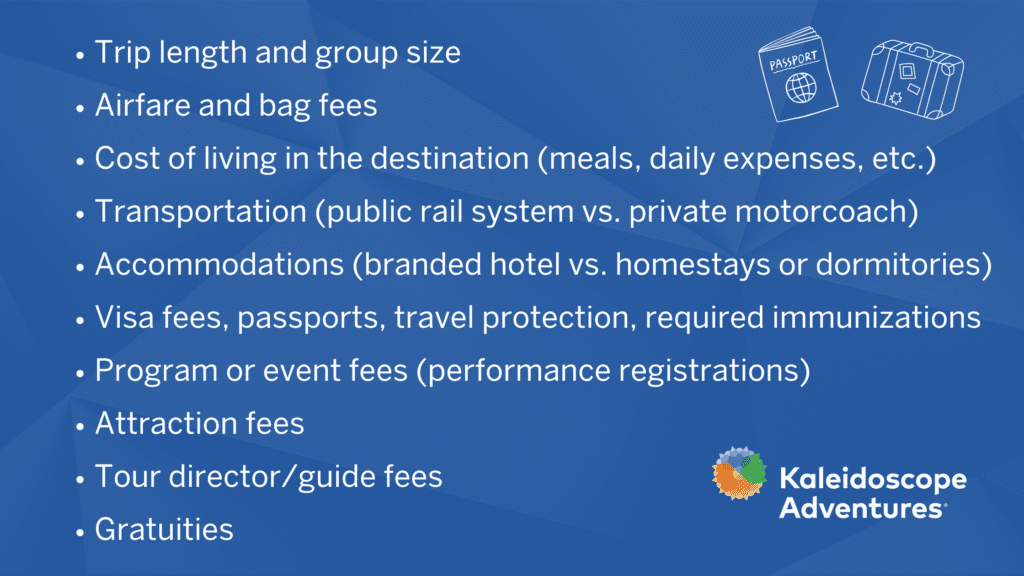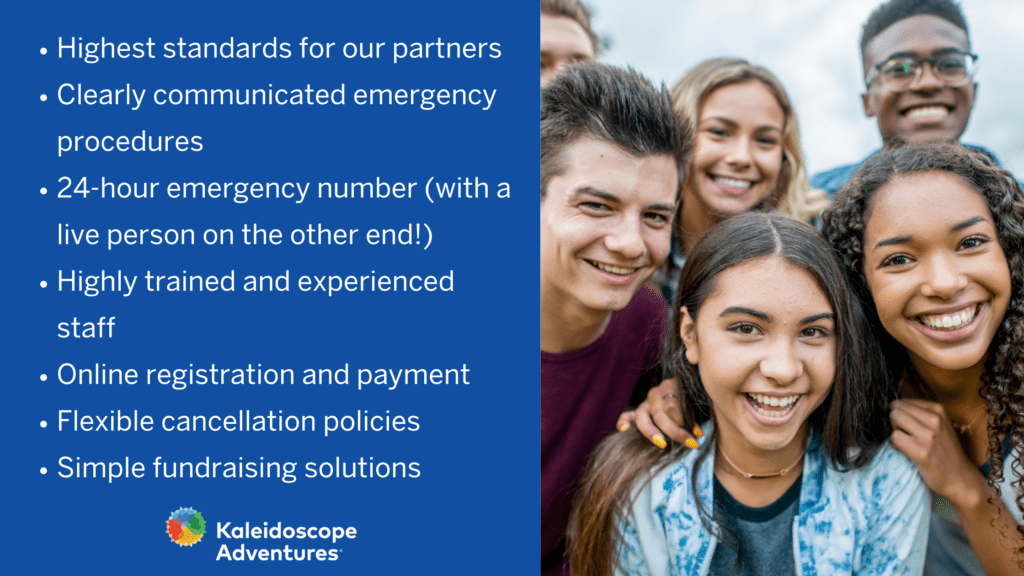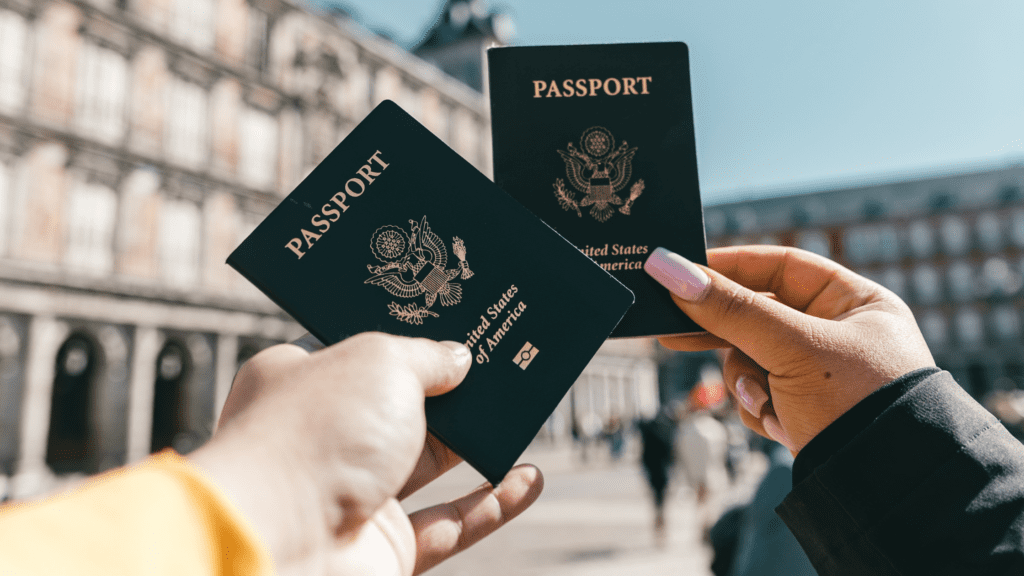Ultimate How-To Guide for International High School Travel
10 Simple Steps to Plan Your Trip
You’ve been thinking about it. You’ve really been considering a high school trip abroad. International travel is such an important part of teaching students to be global citizens… but oh, where to begin?! No worries – we’ve got you covered with the ultimate how-to guide for international high school travel.
We’ll walk you through everything from picking the right destination to packing the right clothes in 10 simple steps. Let’s get started!
1. Where Do You Want to Go?
Chances are that you already have a destination in mind. Maybe it’s that incredible performance opportunity in Ireland or the dream science trip to Costa Rica.

Wherever you want to go, start by asking your students what their trip expectations are. If they aren’t really interested in the destination or experience, can’t afford it, or have safety concerns, they won’t buy in, and your trip won’t go.
Take time to lay out your trip plan and discuss it with potential travelers. Share a sample itinerary, possible budget, and your curricular goals.
In short, engage students in the conversation and start a buzz!
A Guide to Finding the Perfect International Student Destination
2. Get Your Trip Approved
Before you can start your international adventure, you’ll need your administration to sign off on it. It’s a big ask… so be prepared!
- Clearly communicate the purpose of your trip and identify the type of trip you’re planning. Is it a performance trip? STEM or history trip? Will it involve cultural or language immersion?
- Demonstrate how your travel meets curricular requirements and learning goals outlined by your state.
- Learn everything you can about your destination, including health and safety guidelines, cultural norms, required documents and immunizations, etc.
The U.S. Department of State website is a great place to start. Here you’ll find country information, a traveler’s checklist, and advice from the CDC.
- Expect the unexpected. The past few years have taught us to be ready for anything – including any surprises that might pop up on your international trip. Be ready to share your emergency plan with administrators.
Pro Tip: Teachers and directors will often adapt existing district emergency plans so that students, parents, and administrators are already familiar with the basics.

3. Let’s Talk Budget
It would be great if the price of the trip was irrelevant, but, unfortunately, we live in the real world. Inflation has taken its toll on many families, and some may think that international trip is out of reach.
But there are steps you can take to help offset trip costs.
Break down trip costs…
Be transparent about your budget from the outset and break down the costs. Consider:

Spelling out exactly what their dollars are doing can help families with the initial sticker shock.
then… make them manageable!
After you’ve researched your potential expenditures, look for ways to make them more manageable.
For example, set a payment schedule that allows for smaller payments throughout the year instead of one or two big payments.
- Plan early. Booking your trip as early as possible improves your chances of securing better rates on transportation, hotels, and tickets. Many festivals offer “early bird” registrations as well!
Pro Tip: Planning an international student trip should begin at least 12-18 months out. In some cases, your reason for travel will determine how far in advance you should plan. For example, applications for the St. Patrick’s Day Parade in Ireland must be submitted two years before you want to participate!
- Take advantage of off-peak travel dates for better rates on flights, accommodations, and even attractions.
- Pay attention to airline baggage fees and pack accordingly. Many international flights allow one free checked bag (sometimes two) but charge exorbitant rates for each additional piece. Extra bags can exceed $200 per bag.
- Most importantly, get a fundraising campaign going! The best way to cut individual costs on an international trip is to raise money!
4. Paying for the Trip
A big school trip can come with a big price tag. Reduce the financial burden by fundraising, crowdfunding, or seeking sponsorships and scholarships.

Fundraising
Get creative and involve your school, local community, and families in supporting your adventure through fundraising. Plan a car wash, cash in on candy bars, or sell some strip tickets.
Explore More Fundraising Options
Crowdfunding
Crowdfunding is a great way to include family and friends in the excitement of an upcoming trip. These sites allow students to collect and organize donations from people they know (friends, family, etc.)
Learn How Crowdfunding Can Work for You

Sponsorships
A sponsorship is any travel expense that is paid for by a third party. Typically, sponsorships come from businesses or organizations in your community with the expectation that they will be highlighted in some way (like named on the back of a t-shirt.)
Many sponsors can also claim a tax credit for these kinds of donations and are therefore open to helping your group.
Follow These 5 Easy Steps to Get Sponsorships for Your Trip
Scholarships
There is travel money available for qualifying students – if you know where to look! We’ve included some resources and links below.
Learn More About Travel Grants and Scholarships

5. Plan A Parent Meeting
Parents have lots of questions when sending their offspring into the wide, wide world! They’ll want to know about chaperones, dress codes, packing lists, spending money, rooming buddies, food, and more.
They’ll also want to know who’s looking out for their children, where they can make payments, and how refunds are handled in the event of an emergency.
Be prepared to answer the most common questions during a parent meeting or in response to a flurry of emails in your inbox.
Here’s a sneak peek…
6. Choose Your Chaperones
Picking the perfect chaperones for your adventure may not be as simple as you’d like. Suddenly, every parent and TA is your best friend, hoping for a free trip overseas!

But first things first… Check with your school district about a chaperone guide. Most districts have very specific requirements for those who travel with students.
Tips for Picking the Perfect Chaperones
7. Offer Travel Protection
The unpredictable can happen at any given time. Travel protection is a way to help protect your travel investments, belongings, health and safety, and other losses related to travel. It can provide coverage for unexpected events that may happen before or during your trip.
8. Plan with a Partner
If you’re beginning to feel a little overwhelmed and reconsidering international travel, don’t panic! You just need the right student travel planning partner to handle the heavy lifting.
Choose a trip planning partner with experience. Look for a student travel company with a stellar safety record. More importantly, look at the partners with which that company works.
Kaleidoscope Adventures has been a leader in the student travel industry for 30+ years. The expert KA team prioritizes easy planning and attention to safety through:

Kaleidoscope Adventures is travel beyond expectations!
9. Passports Please
A passport is required for all travelers (including minor children) on all international trips. Each traveler is responsible for obtaining their own passport.
According to the State Department, passport applications are currently taking 6-8 weeks to complete. It is IMPERATIVE that students obtain a passport as soon as possible.
Passports should not expire for at least 6 months from the date when you’ll return. All pages must be securely fastened inside. (Some countries will not accept a passport that does not meet these standards.)

10. It’s Go Time!
You’ve crossed your Ts and dotted your Is – Now it’s time to get your students ready for the adventure of their lives!!
As you prep, remember that a trip abroad may be a new experience for many of your young travelers. Review a few touchpoints before departure.

Responsible Tourism
Explain to students that what is “normal” in the U.S. may not be acceptable in other countries. Give them a primer on what to expect and how to be respectful of local customs, traditions, and etiquette.
Teach students basic greetings and phrases and outline appropriate dress codes. Encourage them to embrace the local culture by trying new foods and cultural activities.
Most importantly, remind them that they are guests in someone else’s home and should be responsible tourists.
5 Ways to Practice Responsible Tourism
Travel Tech
Tech makes our daily lives easier, and travel is no exception. Online platforms for payments and registrations make the planning process easier. But tech like AI, group communication apps, and flight trackers can be lifesavers when you’re on the road!
Platforms like Google Translate, DeepL, and ChatGPT make interacting with locals as easy as speaking into your phone.

AI-powered tools provide real-time updates on travel logistics like traffic, weather conditions, closures, etc. This helps trip leaders and tour directors respond quickly to changes or challenges.
Apps like Remind let you communicate faster with real-time messaging for the group. Most students are familiar with Remind already and it works internationally.
The MyTSA app is a super helpful resource for groups traveling by air. It gives travelers up-to-date airport info (including how busy your airport might be!) along with tips for what to pack and how to prepare for screening. It’s great for first-time flyers or seasoned travel pros!
Packing List
Since most students will try to pack everything but the kitchen sink, give them a checklist to keep it simple! Below is a suggested list that you can adapt for your specific trip.
If you’re flying with musical instruments, we’ve also included a helpful .pdf guide from the Department of Transportation.
DOT “Flying with Musical Instruments” Tip Sheet
Ultimate How-To Guide for International High School Travel
Planning an international high school travel adventure takes a little forethought and know-how, but it’s definitely worth the effort! Kids who travel have a strong sense of their place in the world, are more tolerant and respectful of others, are more collaborative, and adapt more readily to new situations.
In short, it’s time to plan your trip!
CONNECT WITH THE KA EXPERTS FOR A FREE QUOTE

Why Kaleidoscope Adventures?
As a leader in the student travel industry for 30+ years, Kaleidoscope Adventures exceeds expectations for student and performance group travel.
We’ll work with you to plan an exceptional travel experience and provide impeccable customer service from start to finish
Learn More
